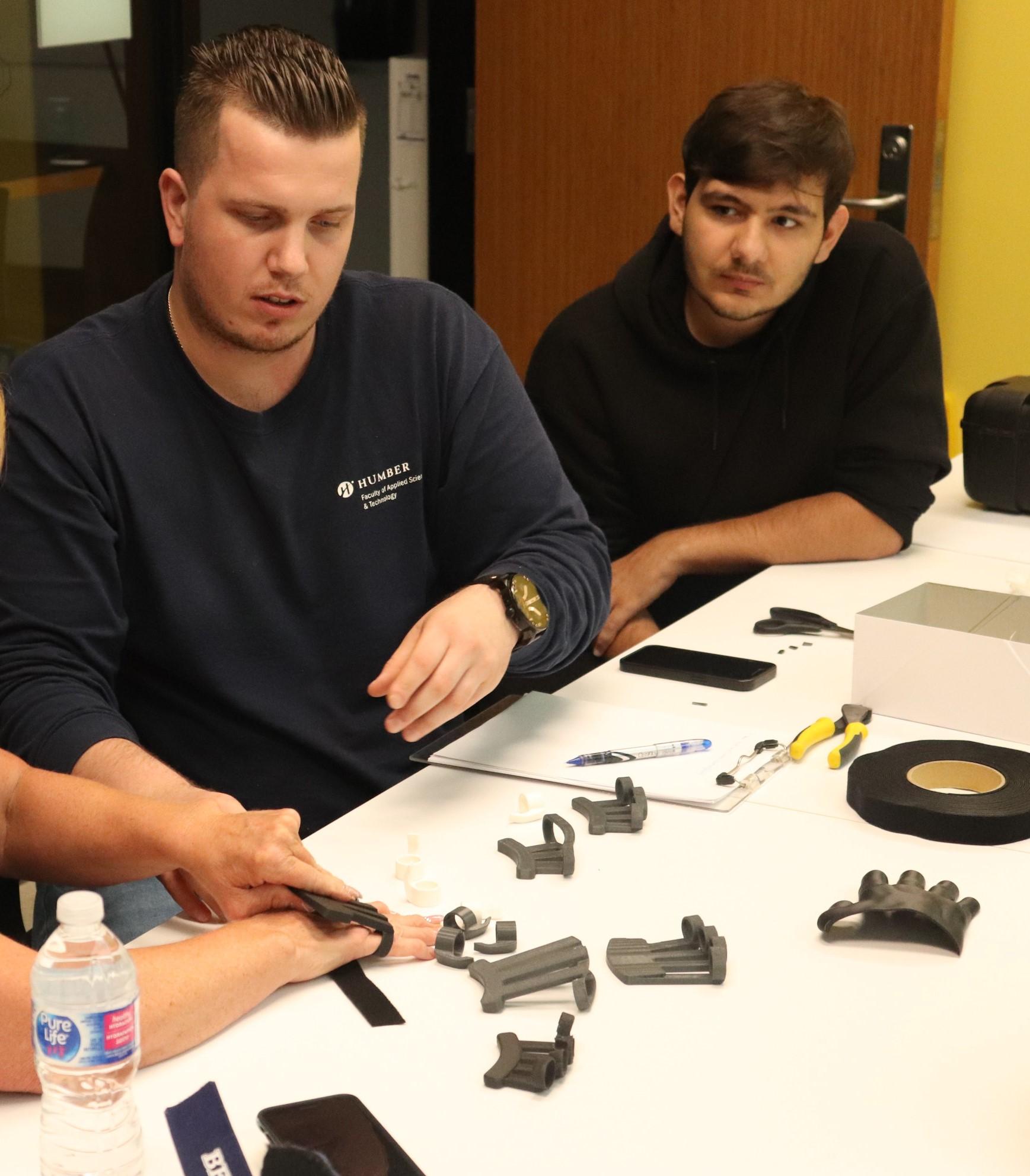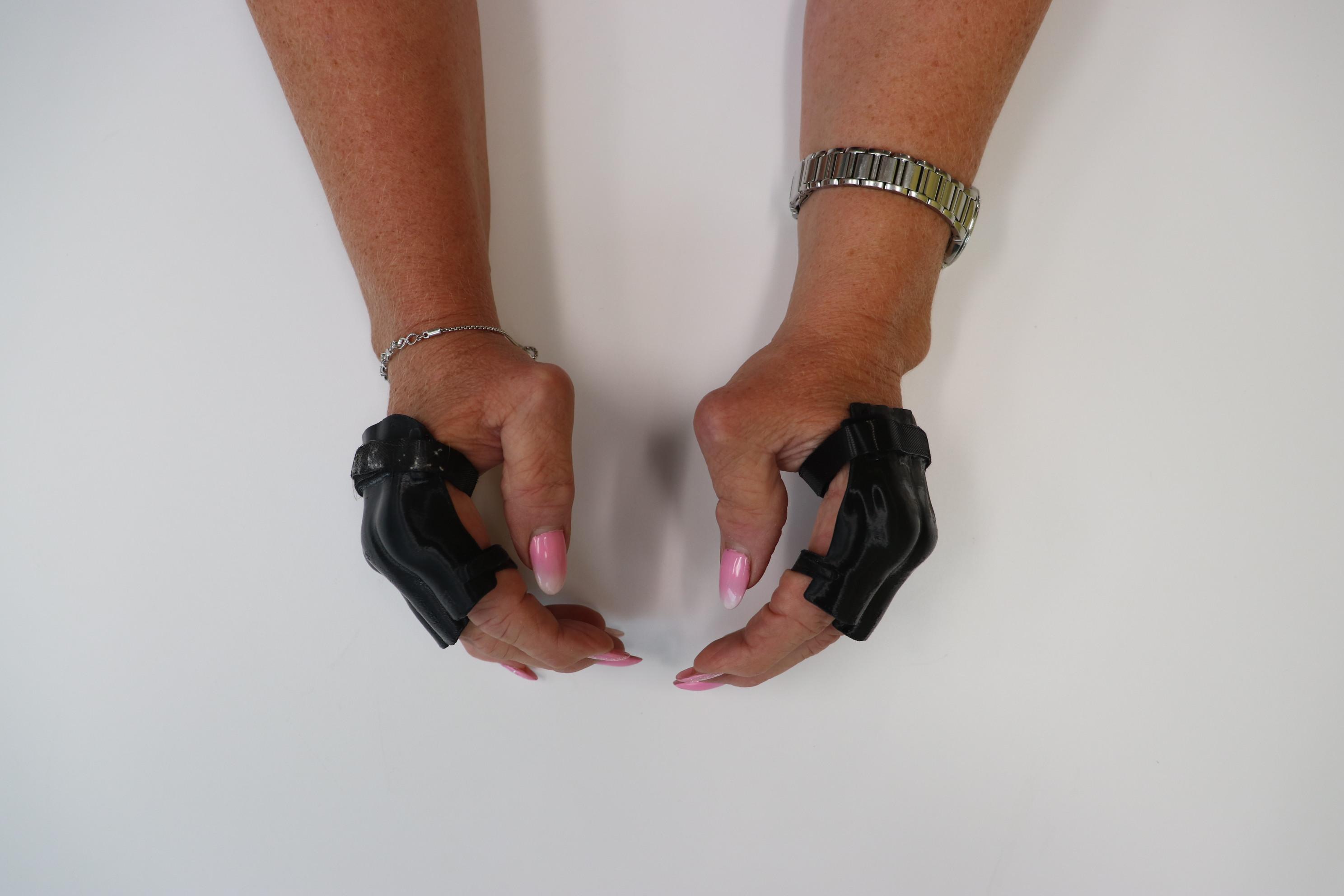Humber College has leveraged its 3D scanning and 3D printing technology to help improve the life of a person with limited mobility in their hands due to a medical condition.
It came about from Humber faculty member Ali Taha, who is affiliated with Tetra Society of North America, an organization whose volunteers work with clients to create custom made assistive devices. Taha connected with Mercedes Reeb, an occupational therapist with Arthritis Society Canada, and the Barrett Centre for Technology Innovation (Barrett CTI) to conceptualize the project.
The client, Constance Rennie, was diagnosed with Lupus and suffers from severe dexterity issues in her hands. According to the Lupus Canada website, Lupus is a chronic disease that can cause inflammation and pain in any part of the body and is estimated to affect more than one in 1,000 Canadians.
“We had been really struggling to create a brace that met her needs,” said Reeb.

Rennie’s existing hand and wrist braces had limited functionality and weren’t comfortable for extended daily use. This spawned conversations about how to leverage Humber’s Centres of Innovation network and their collaborative approach to projects between partners, faculty and students.
“I was jumping over the moon when we heard back from Humber,” said Rennie. “I’m so grateful and so blessed and the whole team at Humber has given me real hope. Just imagine not being able to use your hands and how that affects everything. It’s an immense sense of relief and a sense of freedom because I can do so many more activities now.”
Rennie, who is a Humber alumna, said something as simple as dropping her bank card while paying was a nightmare for her because she couldn’t pick it back up. The splints have helped her tremendously by improving functionality and reducing pain.
The project team, which included Barrett CTI mechanical technologist Anxhelo Mecollari, Barrett CTI project coordinator Vipul Dharavath, student Burak Istikam and Taha, met with Rennie and examined the devices she had been wearing.
Driven by a passion for technology and a keen sense of empathy, Burak, a Mechanical Engineering Technology student, played an integral role in the project’s success. He led the charge in 3D scanning the contours and dimensions of the Rennie’s hands then employing reverse engineering techniques to adapt the data captured and 3D print meticulously tailored braces.
“This project is very rewarding and serves as a testament to the innovative ways in which technology can unlock health-care challenges,” Burak mentioned.
Several prototypes were created using the 3D printers from industry partner Trimech at the Barrett CTI. Through sessions of collaboration, the team was able to modify and refine the final product with Reeb providing clinical expertise, Rennie adding her personal input and the Humber team leveraging their technical expertise to use the technology to find a solution.
Dharavath called the project a first-of-its-kind for the Barrett CTI and one that will always be memorable for him.
“This project has a very human aspect to it, and I think it’s paving the way for similar projects and research to show how we can leverage the technologies at the Barrett CTI and coordinate projects that can have a positive impact on people’s lives,” said Dharavath.
“The application of using the 3D scanner, data analyses, 3D print, design, prototyping and testing will have great impact on new course development,” said Taha. “The application of the latest technology and software enhances learning experience and makes education more engaging. This project, as well as similar ones, bring real-life applications into the classroom, and it expands learning scopes by connecting theoretical concepts to practical and real-world situations.”
Dharavath added that projects such as this give partners, faculty and students an opportunity to explore and access the Barrett CTI’s technology while also bringing their knowledge and expertise to the table.
